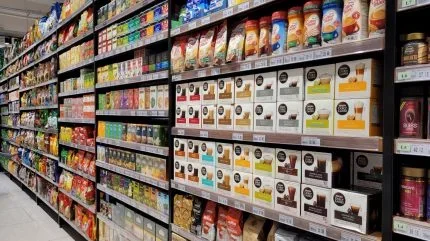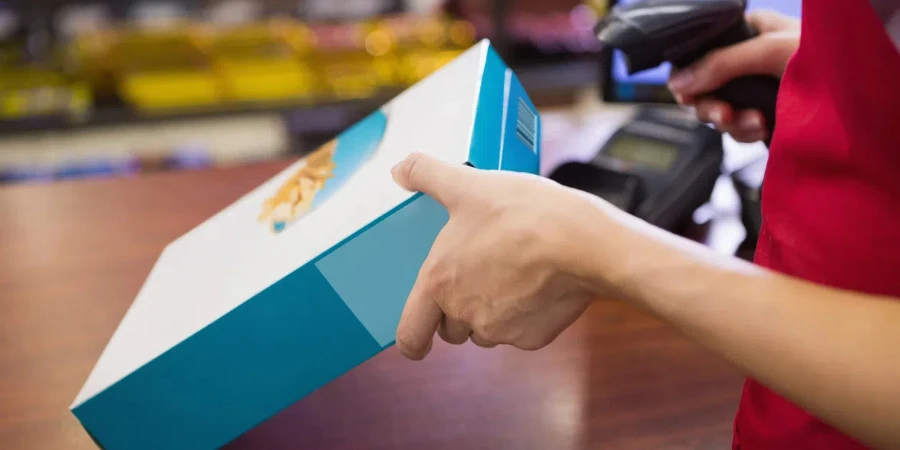As the retail industry evolves, packaging has emerged as a crucial element that goes beyond protecting products.

Packaging has evolved from a mere protective covering to a strategic asset in retail. Its importance is increasingly recognised as it plays a pivotal role in consumer decision-making, brand perception, and sustainability efforts.
This article explores the perspectives of retailers on packaging, delving into its significance, the balance between aesthetics and functionality, and the growing emphasis on sustainability.
The role of packaging in consumer decision-making
In the competitive retail landscape, packaging can be the deciding factor for consumers when choosing between similar products.
Retailers understand that first impressions are crucial, and packaging often serves as the first point of contact between a product and a potential buyer. Attractive packaging can catch the eye, convey brand values, and provide vital information about the product.
For instance, the use of vibrant colours, engaging graphics, and clear labelling can significantly enhance a product’s shelf appeal. Packaging that communicates a product’s benefits and features effectively can influence a consumer’s decision to purchase.
Retailers are keenly aware of this and invest in packaging designs that not only protect the product but also promote it.
Moreover, the tactile experience of packaging – the material used, the ease of opening, and the overall feel – can also affect consumer perceptions. Premium products often come in high-quality packaging that suggests luxury and exclusivity, reinforcing the product’s value proposition.
Thus, packaging is an integral part of the consumer experience, shaping perceptions and driving sales.
Balancing aesthetics and functionality
While aesthetics are important, functionality remains a critical aspect of packaging.
Retailers seek packaging solutions that not only look appealing but also serve practical purposes. This includes protecting the product from damage, extending shelf life, and ensuring ease of transportation and storage.
Functional packaging solutions can enhance the consumer experience by being user-friendly. For example, resealable packaging can maintain product freshness and convenience, while tamper-evident designs can assure consumers of the product’s safety.
Retailers must strike a balance between creating visually appealing packaging and ensuring it meets practical requirements.
Innovations in packaging technology have made it possible to achieve this balance. Flexible packaging, for instance, is both lightweight and durable, reducing transportation costs and environmental impact.
It can be moulded into various shapes and sizes, offering design flexibility while maintaining functionality. Retailers are increasingly adopting such innovative solutions to meet consumer expectations and operational needs.
The shift towards sustainable packaging
Sustainability has become a key concern for consumers and retailers alike. There is a growing demand for packaging that is environmentally friendly, recyclable, and made from sustainable materials.
Retailers are responding to this demand by prioritising eco-friendly packaging solutions.
Sustainable packaging can take many forms, from biodegradable materials to recyclable plastics and reusable containers. Retailers recognise that adopting sustainable packaging not only helps protect the environment but also resonates with eco-conscious consumers, enhancing brand loyalty and reputation.
The shift towards sustainable packaging is also driven by regulatory pressures and corporate social responsibility (CSR) commitments. Many retailers have set ambitious targets to reduce their environmental footprint, and sustainable packaging is a critical component of these initiatives.
By reducing packaging waste and using eco-friendly materials, retailers can contribute to a circular economy and minimise their impact on the planet.
Challenges and opportunities
Despite the clear benefits, transitioning to sustainable packaging presents challenges. The cost of sustainable materials can be higher than conventional options, posing a financial burden for some retailers.
The infrastructure for recycling and disposing of sustainable packaging is not always readily available, complicating implementation efforts.
However, these challenges also present opportunities for innovation and collaboration. Retailers are working with packaging manufacturers, environmental organisations, and governments to develop cost-effective and efficient sustainable packaging solutions.
Collaborative efforts can drive advancements in material science, improve recycling infrastructure, and create new business models that support sustainability.
Furthermore, educating consumers about the importance of sustainable packaging and how to dispose of it properly is crucial. Retailers play a significant role in this regard, using packaging as a platform to communicate sustainability messages and encourage responsible behaviour.
Packaging redefines protection
Packaging is no longer just a protective layer; it is a strategic element that influences consumer decisions, enhances brand value, and supports sustainability goals.
Retailers understand the multifaceted role of packaging and strive to balance aesthetics, functionality, and environmental responsibility. By adopting innovative and sustainable packaging solutions, retailers can meet consumer expectations, comply with regulations, and contribute to a more sustainable future.
The perspectives of retailers on packaging underscore its importance in the modern retail environment. As consumer preferences and regulatory landscapes continue to evolve, packaging will remain a dynamic and critical aspect of retail strategy.
Retailers that embrace these changes and invest in innovative packaging solutions will be well-positioned to succeed in the competitive market.
Source from Packaging Gateway
Disclaimer: The information set forth above is provided by packaging-gateway.com independently of Alibaba.com. Alibaba.com makes no representation and warranties as to the quality and reliability of the seller and products.




